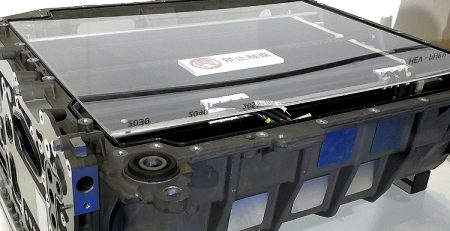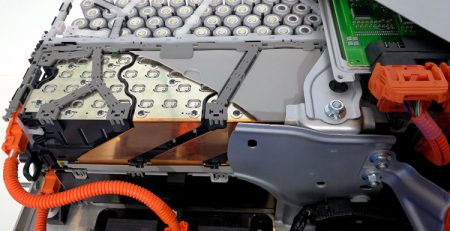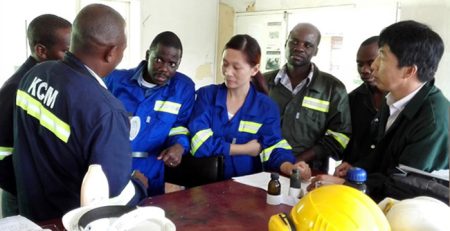Precursor and production method of nickel cobalt manganese lithium positive electrode material for lithium-ion batteries
Precursor of nickel cobalt manganese oxide lithium positive electrode material for lithium-ion batteries and its production method. The chemical formula of the precursor of the cobalt manganese oxide lithium positive electrode material is (Ni1-x-yCoxMny) O δ, Among them, 0.5< δ< 1.5, 0<x<1, 0<y<1, 0<x+y<1; The average particle size D50 is 5-15 μ m. Loose density ≥ 1.8g/cm3, compacted density ≥ 2.5g/cm3. The production method of a precursor of nickel cobalt manganese lithium positive electrode material for lithium-ion batteries includes the following steps: (1) preparation of nickel cobalt manganese alloy powder; (2) Oxidize nickel cobalt manganese alloy powder into nickel cobalt manganese oxide. The nickel cobalt manganese lithium positive electrode material (ternary material) for lithium-ion batteries has advantages such as high specific capacity, good thermal stability, and low price. It is the most promising positive electrode material to replace lithium cobalt oxide materials and has good application prospects in power fields such as electric vehicles and electric tools.
Most of the precursors for preparing ternary materials for lithium-ion batteries currently use nickel cobalt manganese hydroxide or carbonate obtained by co precipitation method as the precursor. The precursor has a spherical morphology with an average particle size (D50) of 5-15 μ m. The density is relatively low, with a loose density of around 1.5 g/cm3 and a compacted density of around 1.8 g/cm3. Using this precursor system to prepare ternary materials, a large amount of gas will be generated during the subsequent high-temperature calcination reaction process, generating pores inside the material, reducing the density of the material, and affecting the volume energy density of the material. Thus, the precipitated nickel cobalt manganese hydroxide or carbonate can be thermally decomposed to generate nickel cobalt manganese oxide as a precursor, which is more conducive to further uniform mixing with lithium containing compounds during subsequent processing.
The chemical composition of the cathode material of the lithium battery, nickel cobalt manganese oxide precursor, is (NixCoyMn1-x-y) 3O4, where x+y<1. The preparation process is characterized by adding alkaline solution containing ammonia to a solution containing soluble nickel salt, cobalt salt, and manganese salt for co precipitation reaction, and then calcining the precipitation product to obtain the oxide (NixCoyMn1-x-y) 3O4. This preparation method has a long process and low production efficiency; In addition, it is inevitable to generate a large amount of wastewater, and direct discharge of wastewater will cause serious pollution to the environment. However, the cost of meeting discharge standards for wastewater treatment is high, and the economic benefits are poor.
Our metal extractants as below:
- DZ988N/DZ973N/DZ902 copper solvent extraction reagent.
- DY319 high efficiency nickel cobalt co-extraction extractant, can take out nickel and cobalt together from nickel laterite ore or Lithium battery electrolyte.
- DZ272 Nickel cobalt separation extractant, it can take cobalt out from nickel cobalt solution.
- DY377 efficient nickel and diamond separation extractant.
- DY366 new advanced nickel cobalt extractant.
- P204 (D2EHPA or HDEHP) extractant.
- DY301, DY302 for nuclear spent fuel recovery.
- Other extraction reagents for Vanadium extractant, Lithium extractant, Ferro extractant and rare earth extractant.




